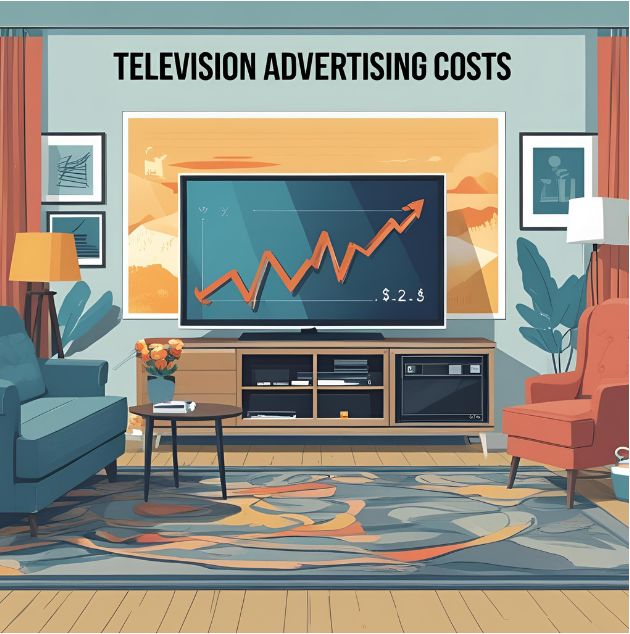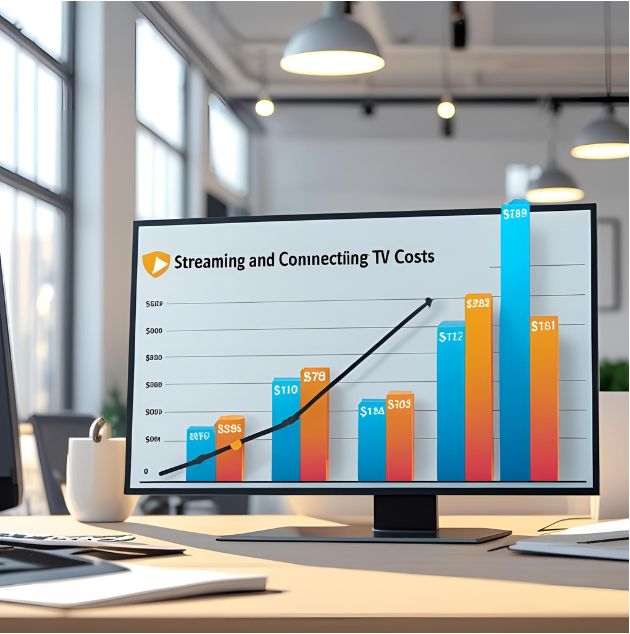Television advertising remains one of the most powerful marketing channels for reaching mass audiences, but understanding the true cost can feel overwhelming. From prime-time slots that command six-figure price tags to local cable spots available for hundreds of dollars, TV advertising costs vary dramatically based on numerous factors.
This comprehensive guide breaks down everything you need to know about television advertising costs, from the variables that influence pricing to practical strategies for maximizing your advertising budget. Whether you’re a small business owner considering your first TV campaign or a marketing professional looking to optimize spending, you’ll discover actionable insights to make informed decisions about your television advertising investment.
We’ll explore the different types of TV advertising, examine real-world pricing examples, and provide practical tips for getting the most value from your television marketing budget.
Understanding the Television Advertising Landscape
Television advertising operates on a complex pricing structure influenced by multiple variables. Unlike digital advertising where you can set daily budgets and adjust spending in real-time, TV advertising requires more strategic planning and larger upfront investments.
The television advertising ecosystem includes several distinct categories, each with its own pricing model. Network television represents the most expensive option, featuring nationally broadcast programs with massive audiences. Cable television offers more targeted demographics at lower costs, while local television provides geographic specificity for businesses serving specific markets.
Streaming television has emerged as a significant player, blending traditional TV reach with digital advertising precision. This newer category often provides more flexible pricing options and detailed analytics compared to traditional television advertising.
Factors That Influence Television Advertising Costs

Audience Size and Demographics
The number of people watching a program directly impacts advertising costs. Shows with larger audiences command higher prices, but audience quality matters just as much as quantity. Advertisers pay premium rates to reach specific demographics that align with their target customers.
Prime-time programming typically attracts the largest audiences, resulting in the highest advertising costs. However, niche programs with smaller but highly engaged audiences can also command premium pricing when they attract valuable demographics.
Time Slots and Seasonality
Television advertising costs fluctuate significantly based on when your advertisement airs. Prime-time slots (8 PM to 11 PM) cost substantially more than daytime or late-night alternatives. Morning news programs and evening news broadcasts also command premium pricing due to their engaged audiences.
Seasonal demand affects pricing throughout the year. The fourth quarter sees the highest television advertising costs as retailers compete for holiday shoppers. Major sporting events, award shows, and season finales create additional premium pricing periods.
Geographic Reach
National television campaigns require the largest investment, as you’re paying to reach audiences across the entire country. Regional campaigns cost less but still involve significant investment when covering multiple major markets.
Local television advertising offers the most affordable entry point, allowing businesses to target specific cities or metropolitan areas. However, local markets vary dramatically in size and cost, with major cities commanding higher prices than smaller markets.
Production Quality and Length
Beyond the cost of airtime, television advertising requires professional production. High-quality commercials with professional actors, elaborate sets, and sophisticated post-production can cost tens of thousands of dollars to produce.
Advertisement length affects both production and airtime costs. Thirty-second spots represent the standard format, while fifteen-second advertisements cost less but provide limited time to convey your message. Sixty-second spots offer more storytelling opportunity but double the airtime investment.
Network Television Advertising Costs
Network television advertising represents the pinnacle of television marketing investment. Major networks like ABC, CBS, NBC, and FOX command the highest prices due to their massive reach and premium programming.
Prime-time network advertising costs range from $100,000 to over $500,000 for a thirty-second spot, depending on the specific program and time of year. Popular dramas, comedies, and reality shows with strong ratings command the highest prices within this range.
Special events create exceptional pricing tiers. Major sporting events like playoff games and championship matches can cost $1 million or more for thirty seconds of airtime. Award shows, season premieres, and finale episodes also command premium pricing above standard rates.
Network advertising requires substantial minimum investments. Most campaigns involve multiple airings across different programs to achieve effective reach and frequency. A modest national network campaign typically requires budgets of $1 million or more when combining production costs with airtime purchases.

Cable Television Advertising Costs
Cable television advertising offers more targeted demographic reach at lower costs than network television. Popular cable networks like CNN, ESPN, HGTV, and Discovery Channel provide access to engaged audiences interested in specific content categories.
Prime-time cable advertising costs typically range from $5,000 to $50,000 for thirty-second spots, depending on the network and specific program. Niche networks with smaller audiences may offer spots for $1,000 to $10,000, while major cable networks approach network television pricing for their most popular shows.
Cable advertising provides more flexibility in terms of budget and targeting. Many cable networks offer package deals that include multiple airings across different time slots and programs. This approach helps advertisers achieve better reach and frequency while managing costs.
The demographic targeting available through cable networks often justifies the investment for businesses with specific target audiences. Food Network reaches cooking enthusiasts, while ESPN targets sports fans, allowing for more precise marketing alignment.
Local Television Advertising Costs
Local television advertising provides the most accessible entry point for businesses serving specific geographic markets. Costs vary dramatically based on market size, with major metropolitan areas commanding significantly higher prices than smaller markets.
In major markets like New York, Los Angeles, or Chicago, local television advertising costs range from $1,000 to $20,000 for thirty-second prime-time spots. Medium-sized markets typically see costs between $300 and $5,000, while smaller markets may offer prime-time advertising for $100 to $1,500.
Local news programs often provide the best value for businesses targeting engaged community audiences. Morning and evening news broadcasts attract viewers interested in local information, making them ideal for businesses like restaurants, retailers, and service providers.
Local television stations frequently offer production assistance as part of advertising packages. This can significantly reduce the total investment required, as stations provide professional production services at lower costs than independent production companies.
Streaming and Connected TV Advertising Costs
Streaming television advertising has revolutionized the television advertising landscape by combining traditional TV reach with digital advertising precision. Platforms like Hulu, YouTube TV, and streaming services offer more flexible pricing and targeting options.
Streaming TV advertising costs vary based on targeting specificity and platform selection. Basic streaming campaigns might cost $10 to $30 per thousand impressions, while premium targeting or popular programs can reach $50 or more per thousand impressions.
The advantage of streaming television advertising lies in its measurability and flexibility. Unlike traditional television advertising, streaming platforms provide detailed analytics about viewer engagement, completion rates, and demographic breakdowns.
Minimum investments for streaming TV campaigns are typically lower than traditional television advertising. Some platforms allow campaigns to start with budgets as low as $5,000, making television-style advertising accessible to smaller businesses.

Maximizing Your Television Advertising Investment
Strategic planning can significantly improve the efficiency of your television advertising investment. Start by clearly defining your target audience and identifying the programs and networks they’re most likely to watch. This focused approach prevents wasting money on broad reach when targeted reach would be more effective.
Consider mixing different types of television advertising to optimize your budget. Combining local advertising with selective cable or streaming placements can provide broader reach while managing costs. This hybrid approach allows for testing different messages and audiences without committing to expensive network television campaigns.
Negotiate package deals whenever possible. Television advertising sales teams often have flexibility to create custom packages that provide better value than individual spot purchases. Multi-month commitments or off-peak timing can unlock significant discounts.
Track and measure results carefully to optimize future campaigns. Use unique phone numbers, promotional codes, or landing pages to attribute responses directly to television advertising. This data proves campaign effectiveness and informs future budget allocation decisions.
Smart Strategies for Television Advertising Success
Television advertising success requires more than just buying airtime. The most effective campaigns combine strategic timing, compelling creative content, and careful budget management to achieve maximum impact.
Start with clear objectives and realistic budgets. Television advertising works best as part of integrated marketing campaigns that reinforce messages across multiple channels. Consider how television advertising will complement your digital marketing, print advertising, and other promotional activities.
Test different approaches when possible. Local television advertising provides an excellent testing ground for creative concepts, messaging, and timing before expanding to larger markets or more expensive media placements.
Build relationships with television advertising sales representatives who can provide valuable insights about audience trends, programming changes, and promotional opportunities. These relationships often lead to better pricing and more strategic campaign recommendations.
Focus on creative quality regardless of budget size. A compelling thirty-second commercial will outperform a mediocre sixty-second spot every time. Invest in professional production that reflects positively on your brand and resonates with your target audience.





